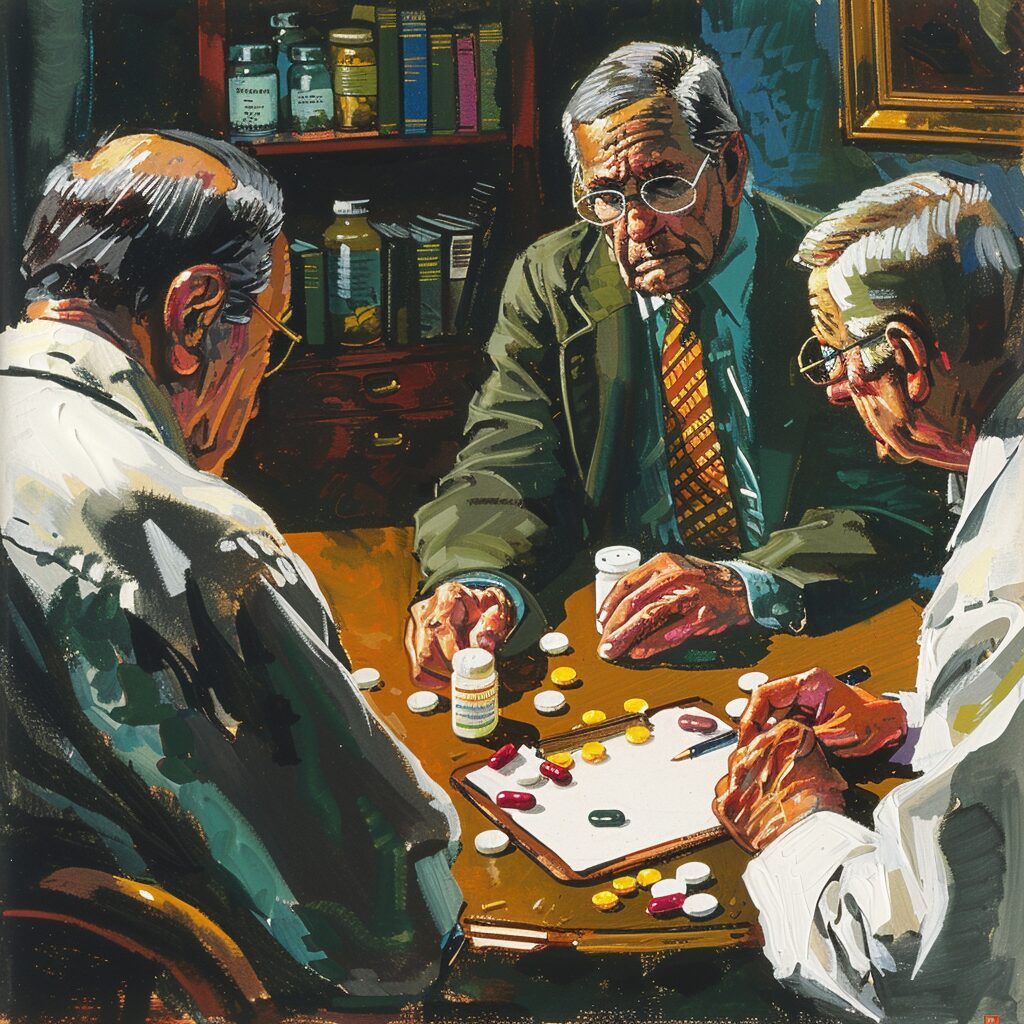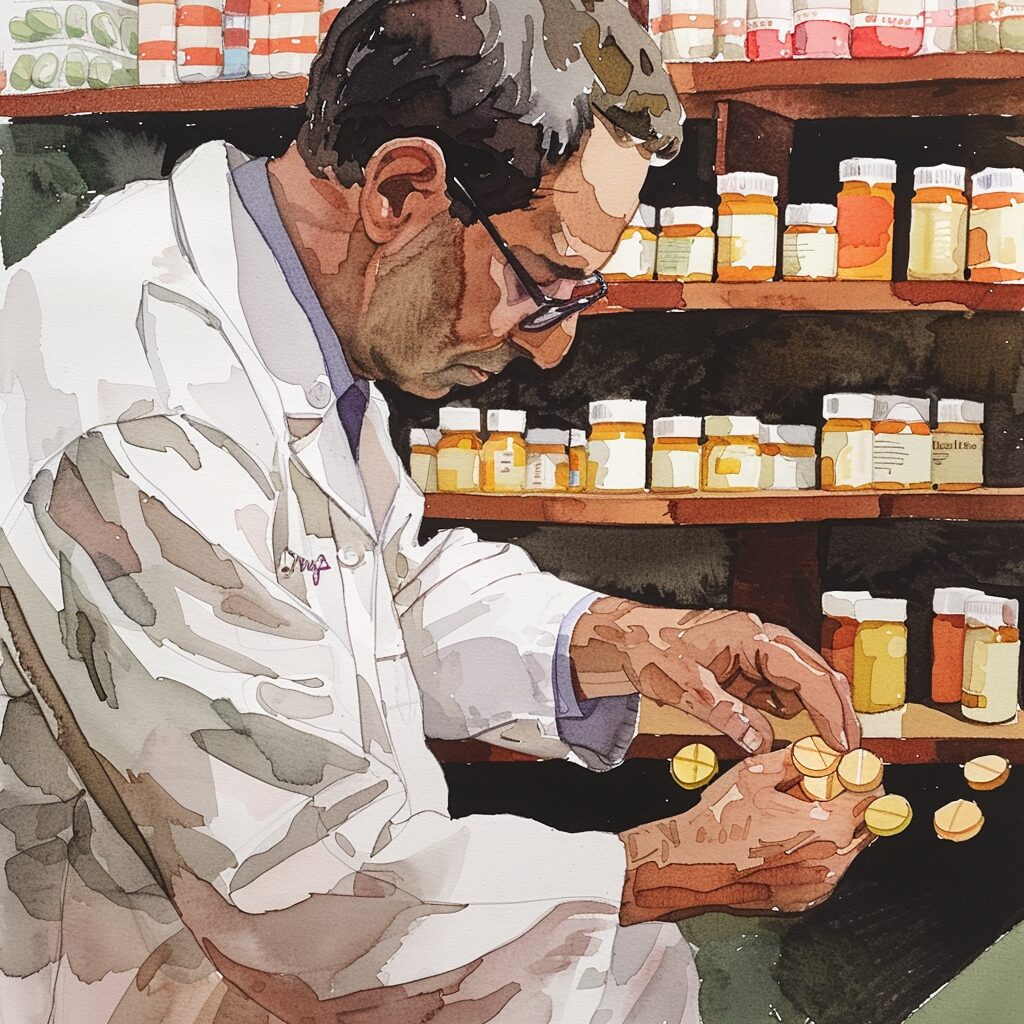Key Takeaways:
- Medication-Assisted Treatment (MAT) is a highly effective approach to addiction recovery, which combines therapy with medication to treat substance use disorders.
- MAT helps to reduce cravings, prevent relapse, and build resilience in individuals struggling with substance use disorder, as well as minimize harm and the impact addiction has on individuals and communities.
- To fully realize the benefits of MAT, challenges such as stigma, access, and cost must be addressed. The implementation of MAT requires meeting clinical and diagnostic criteria, as well as treatment criteria, to ensure its success in addiction recovery.
Are you struggling with addiction? Medication-Assisted Treatment (MAT) is a proven way to help you achieve and maintain sobriety. This article explores how MAT can help you reach your recovery goals.
The Essential Guide to Medication-Assisted Treatment (MAT) for Addiction Recovery
As a writer and addiction recovery advocate, I believe that everyone should have access to the most effective addiction treatment options available. Medication-Assisted Treatment (MAT) has been a game-changer in addiction recovery, but many people still don’t understand how it works or the benefits it offers. That’s why I want to share with you this essential guide to MAT for addiction recovery. In this guide, we’ll cover everything you need to know about MAT, including the benefits of this approach, the different types of medications used in MAT and how they work, and how MAT can improve addiction recovery outcomes. Let’s dive in and discover the potential of this revolutionary treatment approach.

Understanding MAT and Its Benefits
Understanding MAT and Its Benefits is crucial in the fight against addiction. Medication-Assisted Treatment (MAT) is a treatment approach used to help people overcome drug or alcohol addiction. It involves the use of FDA-approved medications in combination with behavioral therapy and counseling to address the root causes of addiction.
MAT works by reducing cravings for drugs or alcohol, managing withdrawal symptoms, and preventing relapse. The FDA-approved medications used in MAT are chosen based on the type of substance abuse disorder, medical history, and individual needs of the patient. The three main types of medication used in MAT are methadone, buprenorphine, and naltrexone.
The benefits of MAT are many. Research shows that patients who receive MAT have better chances of successful recovery than those who do not. When combined with counseling or behavioral therapy, it can significantly improve retention rates in treatment programs and reduce overdose deaths.
Furthermore, avoiding withdrawal symptoms can increase engagement in counseling services by making individuals better able to concentrate on their recovery journey. Additionally, MAT has been shown to improve social functioning and reduce criminal behavior among those receiving treatment.
As someone who has struggled with addiction myself, I suggest that if you’re considering MAT as a treatment option for yourself or someone you know, take time to do your research beforehand. Talk to healthcare professionals trained in addiction medicine as they would be familiar with available resources tailored specifically for individualized care plans.
If you decide to go through with it, remember that success depends on strictly adhering to the medication plan prescribed by your healthcare provider along with regular attendance at counseling services.
With this newfound knowledge about understanding MAT and its benefits let’s dive deeper into Types of Medications Used in MAT and Their Effects which serve as an integral component of this addiction recovery plan.
Types of Medications Used in MAT and Their Effects
Medication-assisted treatment (MAT) helps manage addiction by reducing cravings and suppressing withdrawal symptoms. It involves the use of medications in combination with behavioral therapies to treat substance abuse disorders effectively. Understanding the various types of medications used in MAT and their effects is essential to gain a full understanding of how this treatment works.
Below is a HTML table that provides information about the three primary types of medications used in MAT, how they work, and their effects.
| Medication | How it Works | Effects |
|---|---|---|
| Methadone | Activates opioid receptors in the brain without producing a euphoric high | Reduces cravings and withdrawal symptoms |
| Buprenorphine | Partially activates opioid receptors, but also blocks other opioids’ effects | Reduces cravings and withdrawal symptoms while preventing misuse |
| Naltrexone | Blocks the effects of opioids on the brain’s nerve cells | Prevents relapse by eliminating the rewarding effects of opioids |
Methadone is often used as a substitute for stronger opioids, such as heroin or fentanyl. It can be taken daily under medical supervision in a clinic setting. Buprenorphine is also effective for treating opioid addiction; it comes as a tablet or film that can be dissolved under the tongue. Naltrexone can be given as an injection every few weeks or taken orally daily.
It’s crucial to note that MAT doesn’t replace one addiction with another, nor does it serve as a quick fix. Patients undergoing this treatment need to be committed to making lifestyle changes that support recovery, such as attending counseling sessions and group therapy.
If you’re struggling with addiction but haven’t explored MAT options yet, don’t wait any longer. The longer you wait, the more damage substances cause your physical and emotional well-being, which increases your risk of severe health consequences down the road.
Curious to know how MAT can improve your addiction recovery outcomes? In the next section, I’ll delve deeper into how this treatment method works to help you achieve lasting results.
How MAT Can Improve Addiction Recovery Outcomes
How MAT Can Improve Addiction Recovery Outcomes:
For those struggling with addiction, medication-assisted treatment (MAT) can be incredibly beneficial in improving recovery outcomes. MAT combines the use of FDA-approved medications with behavioral therapy to treat substance abuse disorders.
The reason why MAT can be effective is two-fold. First, the medication used can help alleviate physical withdrawal symptoms and cravings, making it easier for individuals to focus on their recovery. Second, medications such as methadone and buprenorphine work by activating the same receptors in the brain that drugs like heroin and prescription opioids do, but without producing the euphoria or dangerous side effects. This reduces the likelihood of relapse and overdose.
Research has shown that MAT significantly improves outcomes for individuals struggling with opioid addiction in particular. It has been found to increase retention in treatment, decrease illicit drug use, reduce criminal activity, and improve overall health outcomes.
If you or a loved one is struggling with addiction, it’s important to consider all available options for treatment. While not everyone may benefit from MAT specifically, it could be worth discussing with a healthcare provider or addiction specialist.
“Don’t let addiction control your life any longer. Explore all your options for treatment today and take the first step towards a healthier future.”
Next up: “Ready to learn about potential challenges facing MAT? Let’s dive in.”
Challenges and Solutions in Implementing MAT
As an addiction recovery advocate, I believe that medication-assisted treatment (MAT) can be a vital tool in helping individuals overcome substance abuse. However, the implementation of MAT isn t without its challenges. This section will explore some of the obstacles that prevent widespread access to MAT, as well as potential solutions.
To begin, we ll look at overcoming the stigma associated with MAT and the negative perceptions that can keep patients from seeking this evidence-based treatment option. We ll then examine improving access to MAT for all, as geographic, financial, and bureaucratic barriers can limit treatment availability. Finally, we ll consider the high cost of MAT for patients and providers, and explore ways to manage these expenses without compromising treatment quality.

Overcoming the Stigma Associated with MAT
Overcoming the stigma associated with MAT is imperative for increasing access to addiction recovery treatments. MAT, or Medication-Assisted Treatment, is an evidence-based practice that combines medication with therapy and counseling to treat substance use disorders. However, despite its proven effectiveness, some people look down upon the use of medication in addiction treatment. To ensure that people have equal opportunities to avail themselves of effective treatments, it’s important to break down the negative perceptions surrounding medication-assisted treatments.
For the most part, many believe that overcoming stigma associated with MAT is necessary because of misconceptions and prejudices about addiction that are embedded in our society. People who struggle with substance abuse disorders are often viewed as weak-willed or having a moral failing rather than as individuals dealing with a chronic illness requiring medical treatment. This attitude can dehumanize those attempting to overcome their addiction while simultaneously preventing them from receiving the care they require.
Overcoming this stigma requires a comprehensive approach at multiple levels such as education of both patients and providers along with expanding access to care facilities offering MAT. Crucial public policy changes must be made so that insurance plans will cover these types of treatments where appropriate.
This long-standing view on addiction being a personal failure has resulted in too few genuine opportunities for rehab services that rely on promising therapies like Medication-Assisted Treatment (MAT). While non-MAT therapy methods have their place within treatment, there has been an overall lack of acceptance regarding medication inclusion in treating substance abuse disorders among policymakers, clinicians and even within the mental health community themselves.
The way people think about Addiction medicine needs to change – it’s time to embrace all options for care delivery if we hope to create successful outcomes for patients seeking recovery.
Improving Access to MAT for All
Improving Access to MAT for All means ensuring that every person battling addiction has equal access to medication-assisted treatment (MAT). This can mean a range of initiatives from removing systemic barriers to offering reduced-cost services.
Research shows that MAT improves retention rates, reduces the risk of overdose, and helps people in recovery sustain their sobriety. Improving access to this treatment for all will help mitigate the devastating effects of addiction on individuals, families, and communities.
One valuable way to increase access to MAT is by providing mobile clinics such as buses or vans which can visit remote or underserved areas. This not only bridges geographical divides but also overcomes transportation hurdles, allowing more people to seek and receive treatment.
According to the Substance Abuse and Mental Health Services Administration (SAMHSA), around 80% of people who need addiction treatment do not initiate care due to financial barriers. Even though insurance providers are increasingly recognizing the effectiveness of MAT and covering its cost, many patients still struggle with high out-of-pocket expenses. In response, several state Medicaid programs have eliminated co-pays and deductibles for MAT-related services for eligible beneficiaries. For instance, Massachusetts’ Medicaid program decided in 2018 that no copayments would be required from members who fill prescriptions for certain medications used for substance use disorders.
A fact from Psychology Today explains that VA medical centers have done well in broadening access to MAT; however, they face resistance from some opioid treatment programs that are funded through grants within the state system despite legislation introducing consensual participation requirements between VA facilities and non-VA providers.
Freeing more people from addiction is a triumph worth sharing whether it’s a loved one’s journey towards sobriety or our community’s moral duty to support those seeking help. Now moving onto ‘Managing the Cost of MAT for Patients and Providers,’ I’ll place my hand on my pocket if there’s an aim at closing it with loopholes found.”
Managing the Cost of MAT for Patients and Providers
Managing the cost of medication-assisted treatment (MAT) is essential for both patients and healthcare providers. MAT involves the use of medications in combination with counseling and behavioral therapies to help people overcome addiction. The cost of these medications can be high, making it challenging for many patients to afford treatment. At the same time, healthcare providers need to manage costs associated with providing MAT.
To manage the cost of MAT for patients, various options exist – pharmacies may offer programs or discounts that differ based on a patient s income level. Additionally, several pharmaceutical companies offer rebate programs that provide financial assistance for eligible participants. Medicaid and Medicare also offer coverage for individuals seeking treatment under their plans. Providers too need to work on lowering costs – this may include adopting electronic health records or telehealth services, optimizing patient flow throughout treatment transitions, and implementing billing and coding strategies suitable for the National Drug Code (NDC).
Managing costs also involves identifying several other factors such as understanding insurance policies adopted by individual providers, researching available funding opportunities such as grants from state or local entities, finding support groups that are free-of-cost or low in cost in one’s area or online, working out with clinical coworkers considering donated sample products provided by pharmaceutical manufacturers.
To make MAT more accessible while managing expenses effectively from an industry perspective requires cooperation among stakeholders including drug developers, clinicians responsible for administering MAT programs and support personnel such as counselors who closely follow-up with post-patient care outcomes following completion of primary treatments.
Getting your life back into balance after substance abuse has been a difficult journey but by meeting criteria set forth in necessary paperwork you’ll be able to progress to your next step.
Meeting the Criteria for MAT
As someone who has struggled with addiction myself, I know firsthand how difficult it can be to find effective treatment options. Medication-assisted treatment (MAT) offers a promising approach, but it’s important to understand the criteria for this type of treatment to be effective. In this section, we’ll explore two key areas that must be met for successful MAT: clinical and diagnostic criteria, and treatment criteria. By examining both of these aspects, we can gain a better understanding of how MAT can support addiction recovery. We’ll also discuss the success rates and benefits of utilizing MAT as a part of a comprehensive recovery plan.

Clinical and Diagnostic Criteria for MAT Treatment
Clinical and Diagnostic Criteria for MAT Treatment are the set of guidelines that determine whether a patient is eligible for Medication-Assisted Treatment (MAT) or not. These criteria help doctors to diagnose the severity of addiction and evaluate the patient’s overall health condition before prescribing any medication.
In order to understand Clinical and Diagnostic Criteria for MAT Treatment, let’s take a closer look at the following HTML table which outlines the main aspects of these criteria:
| Criteria | Description | Examples |
|---|---|---|
| Addiction Severity | Evaluate the level of addiction in patients using diagnostic tools such as DSM-5. | Dependence on drugs like opioids, alcohol or benzodiazepines. |
| Medical History | Assess current physical health status and previous medical history along with pregnancy status (in case of female patients). | HIV, HCV, HBV, STI screening tests; liver function test; vital signs measurement; pregnancy testing |
| Mental Health Evaluation | Evaluate psychological disorders that might coexist with substance abuse problems. | Depression, anxiety, bipolar disorder |
| Motivation Levels & Willingness to Change Behaviors | Assess how motivated a patient is to change their substance use behaviors | Acceptance of problem; Willingness to work towards positive change |
Clinical and Diagnostic Criteria for MAT Treatment play an essential role in treating individuals fighting addiction by evaluating their overall health condition, diagnosing addiction severity, mental health status, and motivation levels.
A young woman named Sarah had been struggling with opioid addiction for years before seeking assistance from her primary care doctor. After running various evaluations, her doctor recommended Medication-Assisted Treatment as a viable option for managing her symptoms. Since then, Sarah has seen significant strides in her ability to manage her addiction while leading a healthy lifestyle.
If you’re curious about how well Medication-Assisted Treatment works or have considered it as an option yourself after careful evaluation by your healthcare provider, keep reading for the next heading.
“Are you curious about how Medication-Assisted Treatment can help manage addiction? Keep reading to learn about the criteria for success and what you can expect.”
Treatment Criteria for MAT and Its Success
Treatment Criteria for MAT and Its Success
Medication-Assisted Treatment (MAT) has been gaining popularity over the years as an effective method for addiction recovery. However, not everyone can undergo this treatment process. The success of MAT depends significantly on adhering to certain treatment criteria.
Let’s delve into the five points that define the treatment criteria for successful MAT outcomes. Firstly, individuals must be willing to seek treatment and adhere to it diligently. Secondly, candidates must have a medical history and physical examination conducted by an authorized practitioner before commencing treatment. Thirdly, selected medications should match the patient’s addiction severity and medication compliance ability. Fourthly, patients should undergo continuous drug testing throughout their treatment process. Finally, patients must undergo comprehensive counseling to address underlying mental health disorders.
Adherence to these criteria is crucial in ensuring the success of MAT in addiction recovery. Medications used in MAT help reduce withdrawal symptoms when coupled with counseling or therapy sessions that manage long-term care management plans.
If you or a loved one is struggling with addiction, it’s important to address any underlying trauma issues as well. Learn more about addressing trauma in addiction treatment and how it can help in the recovery process.
It’s essential always to note that self-awareness when seeking treatments is vital in achieving successful MAT outcomes as no one size fits all approach works best for everyone from getting through their addiction battles.
Pro Tip: One thing not mentioned so far is keeping track of all medications taken during your entire journey. You might misplace or forget some aspects of your prescribed medication routine; thus recently adopted digital drug tracking apps offer an excellent solution to tackle this obstacle.
With all being said there s more indeed than what meets the eye regarding The Role of MAT in Addiction Recovery let’s explore below how it plays a significant part beside identifying its different roles and benefits!
The Role of MAT in Addiction Recovery
When it comes to addiction recovery, there’s no one-size-fits-all solution. But one approach that’s gaining traction is Medication-Assisted Treatment or MAT. I know from my own experience that the journey towards addiction recovery can be a tumultuous one. That’s why in this section, we will dive deep into the role of MAT in addiction recovery.
We will explore three specific areas of focus within MAT:
- Reducing cravings and supporting long-term recovery
- Preventing relapse and building resilience
- Reducing the harm and consequences of substance use disorder
With research-backed facts and real-world examples, we’ll examine how MAT can potentially change lives for the better.

Reducing Cravings and Supporting Long-Term Recovery
Reducing Cravings and Supporting Long-Term Recovery is one of the key components of addiction recovery. It involves using medication-assisted treatments (MAT) to manage and alleviate physical cravings that arise during addiction recovery. This approach has gained significant recognition in recent years as a highly effective means of supporting those suffering from addiction.
Reducing Cravings and Supporting Long-Term Recovery works by reducing the intensity of cravings, thus helping individuals maintain sobriety for longer periods. MAT combines behavioral counseling with FDA-approved medications such as buprenorphine, naltrexone, or methadone. These medications work by targeting specific areas of the brain that are associated with addiction and withdrawal symptoms.
Studies have shown that using MAT in combination with behavioral therapy can be highly effective in promoting long-term recovery from substance abuse disorders. In fact, research indicates that individuals who use MAT are more likely to stay sober for extended periods than those who rely solely on traditional behavioral therapies.
To achieve successful long-term recovery from addiction, it is important to have a support system in place. One valuable aspect of medication-assisted treatment in addiction recovery is that it offers a highly personalized path, with physicians tailoring treatment plans based on individual patient needs. This level of personalization leads to better patient outcomes and a higher likelihood of success. Learn more about the importance of support systems in addiction recovery. Physicians carefully weigh factors such as an individual’s history with substance abuse, mental health status, medical history, and required dosage to create a customized course of treatment.
Pro Tip: If you or someone you love is struggling with addiction, it s important to consider all available treatments including MAT. Speak with your healthcare provider to explore options for managing craving reduction and support for long-term recovery.
Hook: The next step in successful addiction recovery is preventing relapse and building resiliency stay tuned for how we tackle this crucial stage!
Preventing Relapse and Building Resilience
Preventing relapse and building resilience are crucial elements in addiction recovery. It involves creating a sustainable lifestyle that promotes sobriety and encourages emotional and psychological well-being. By identifying triggers, developing coping strategies, and attending support groups, individuals can mitigate the risk of relapse.
Preventing relapse is often accomplished through medication-assisted treatment (MAT). MAT works by using medication to alleviate cravings and withdrawal symptoms, allowing individuals to focus on their recovery without the physical discomfort associated with detoxification. Together with counseling and behavioral therapy, this approach can provide additional support for those struggling with addiction.
Building resilience also plays a vital role in preventing relapse. Resilience refers to an individual’s ability to cope with stressors and challenges without engaging in harmful behaviors or relying on substance use. This is often achieved through developing healthy habits, such as regular exercise, adequate sleep, and a nutritious diet. Additionally, practicing mindfulness and stress-reduction techniques can help individuals build better coping mechanisms.
As individuals progress through their recovery journey, they may face various challenges that require additional support to prevent relapse. For example, transitioning back into social situations or relationships may be triggering for some individuals. Therefore, it is important to work through these experiences with a counselor or sponsor to learn effective strategies for avoiding drugs or alcohol.
PRO TIP: One useful strategy for building resilience is to create a self-care routine that incorporates activities you enjoy. Whether it’s yoga, painting, or simply taking a relaxing bath at the end of the day – making time for activities that foster positive emotions can help reduce stress levels and promote overall well-being.
HOOK: With these tools at our disposal, we can now explore the next step in addiction recovery – reducing harm and consequence of substance use disorder.
Reducing Harm and Consequence of Substance Use Disorder
Reducing Harm and Consequence of Substance Use Disorder is a crucial aspect of addiction recovery. This involves minimizing the negative impact that substance use disorder has on an individual’s life and surroundings. It aims to reduce harm by managing symptoms, addressing underlying issues, and preventing relapse.
There are numerous ways to reduce harm and consequences of substance use disorder such as quitting cold turkey or joining rehabilitation centers. However, medication-assisted treatment (MAT) is gaining popularity due to its effectiveness in reducing harm outcomes. MAT combines medication with behavioral therapy that helps individuals manage their addiction by decreasing cravings, alleviating withdrawal symptoms, and increasing the likelihood of long-term recovery.
Research suggests that MAT reduces the risk of drug-related overdose, hepatitis C infections, HIV transmission, criminal activity which often accompanies substance use disorders. By providing a more comprehensive approach in treating substance use disorders studying psychological reasons for drug use and implementing specific medications to decrease dopamine receptors associated with craving it can lead towards better outcomes.
A 35-year-old father had been facing opioid addiction for more than five years due to severe chronic pain resulting from a car accident until he started hopping around various doctors before coming across one that suggested MAT as an option which ultimately led towards remarkable improvements in his health status along with a decrease in the gradual alleviation of his addiction problems.
Transforming lives through medication-assisted treatment requires continued research resources targeting innovative approaches within a variety of methodologies followed by empathetic efforts taken within the communities affected by Substance Use Disorders encouraging struggle through resilience which will be covered under “Conclusion: The Advancements and Potential of MAT in Addiction Recovery”.
Summary of the Role of MAT in Addiction Recovery and Its Key Benefits
Medication-Assisted Treatment (MAT) is a significant part of addiction recovery, and its role cannot be understated. It helps people recover from opioid addiction, reduces the risk of relapse and overdose, improves retention in treatment, and reduces criminal activity associated with drug use. Overall, it is a useful tool in addressing the ongoing opioid epidemic.
The Role of MAT in Addiction Recovery is multifaceted. In simple terms, it works by using medications alongside counseling to treat substance use disorder. The medication used can be an agonist that stimulates the same receptors in the brain as drugs like heroin or morphine without producing euphoria or dependence. This process suppresses withdrawal symptoms while reducing cravings for illicit substances such as opioids.
One key benefit of MAT is that it often allows people to manage their addiction while maintaining a more stable lifestyle. People receiving MAT show improved productivity at work and better social functionality than those not on this treatment regimen. This improves overall quality of life for both individuals and families dealing with addiction.
Further benefits include decreased healthcare costs, reduced crime rates related to substance abuse, increased access to addiction treatment facilities and resources needed for recovery.
To accommodate MAT during recovery and maximize its benefits, medical professionals should take into account the specific patient’s underlying health concerns or disorders that could affect medical adherence along with individualized counselling tailored to each case.
Recommendations for MAT Implementation and Future Research
Recommendations for MAT Implementation and Future Research lie in the recommendations for medication-assisted treatment (MAT) as a potential solution to addiction recovery. These recommendations have been made with careful consideration of the current system and drug addiction problems, which have hindered many individuals from getting access to these treatments. Moreover, not all patients are provided with this alternative since it is only recommended for those who require certain criteria.
Recommendations on MAT implementation should be supported by evidence-based medicine to ensure efficacy and reliability. The MAT approach works by providing medicines such as buprenorphine, methadone, naltrexone, or other medications that relieve withdrawal symptoms and opioid cravings. However, combining psychotherapy or cognitive-behavioral therapies with MAT interventions has shown better results in treating opioid dependence.
Recommendations for future research on the medication-assisted treatment could focus on expanding the eligibility criteria for patients receiving this intervention. There is also a need for more research into the most effective use of MAT in different patient demographics from various addiction types. This would allow healthcare professionals to make data-driven decisions when assisting patients with drug addictions.
It is worth noting that partnering with pharmacists could increase access to medication-assisted treatments and improve medication adherence rates among recovering individuals. Pharmacists’ unique considerations could help expand its impact over time.
A notable fact is that MAT was shown to decrease overdose deaths by 40%, according to a report released by National Academies Press in 2019. Furthermore, it demonstrated benefits that can last long after an individual completes a complete course of treatment.
Overall, ‘Recommendations for MAT Implementation and Future Research‘ seek ways to foster optimal access to medication-assisted treatment while looking at methods to enable better efficacy through continuous research advancement.
Some Facts About the Role of Medication-Assisted Treatment in Addiction Recovery:
- Medication-Assisted Treatment (MAT) is an evidence-based approach that combines medication and therapy in the treatment of substance use disorders. (Source: SAMHSA)
- The medications used in MAT are FDA-approved and have been shown to be effective in reducing cravings and withdrawal symptoms. (Source: National Institute on Drug Abuse)
- MAT has been shown to decrease opioid use, reduce overdose deaths, and improve retention in treatment programs. (Source: CDC)
- MAT can be used in combination with other treatment approaches, such as counseling and behavioral therapies, to increase effectiveness. (Source: NIH)
- Access to MAT remains limited for many individuals with substance use disorders, particularly in rural and underserved areas. (Source: American Medical Association)
FAQs about The Role Of Medication-Assisted Treatment In Addiction Recovery
What is the role of medication-assisted treatment in addiction recovery?
The role of medication-assisted treatment (MAT) in addiction recovery is vital by by reducing withdrawal symptoms and cravings, improving treatment outcomes, and reducing overdose risk. MAT combines medication with behavioral therapies and counseling to support an individual in their path to recovery.
What medications are used in medication-assisted treatment?
The medications commonly used in MAT include methadone, buprenorphine, and naltrexone. Methadone and buprenorphine are opioids that work by reducing withdrawal symptoms and cravings, while naltrexone blocks the effects of opioids, preventing users from experiencing the euphoric effects of the drug.
Is medication-assisted treatment safe?
Yes, medication-assisted treatment is considered safe and is used by healthcare providers around the world. However, like any medication, there are possible side effects, and it is essential to work with a healthcare provider to ensure safe use of MAT.
How effective is medication-assisted treatment in addiction recovery?
Medication-assisted treatment is highly effective in addiction recovery. MAT has been shown to reduce opioid use and overdose risk, increase treatment retention rates, and improve overall treatment outcomes.
Do individuals need to stay on medication for a lifetime in medication-assisted treatment?
No, individuals do not need to stay on medication for a lifetime in medication-assisted treatment. It can vary depending on an individual’s needs and treatment goals. Some individuals may only need to use medication for a short period, while others may benefit from long-term use.
Is medication-assisted treatment the only form of addiction treatment offered?
No, medication-assisted treatment is just one form of treatment offered for addiction recovery. Other forms of treatment include counseling, behavioral therapies, and support groups. A healthcare provider can work with an individual to determine the best course of treatment for their needs.








